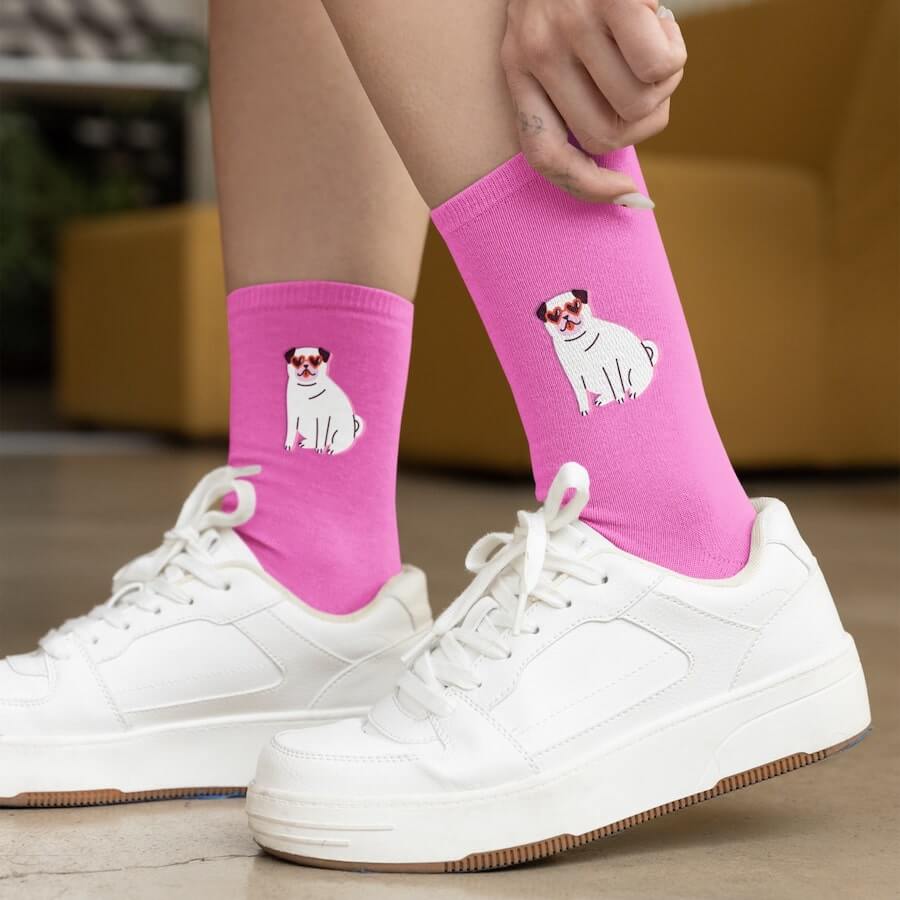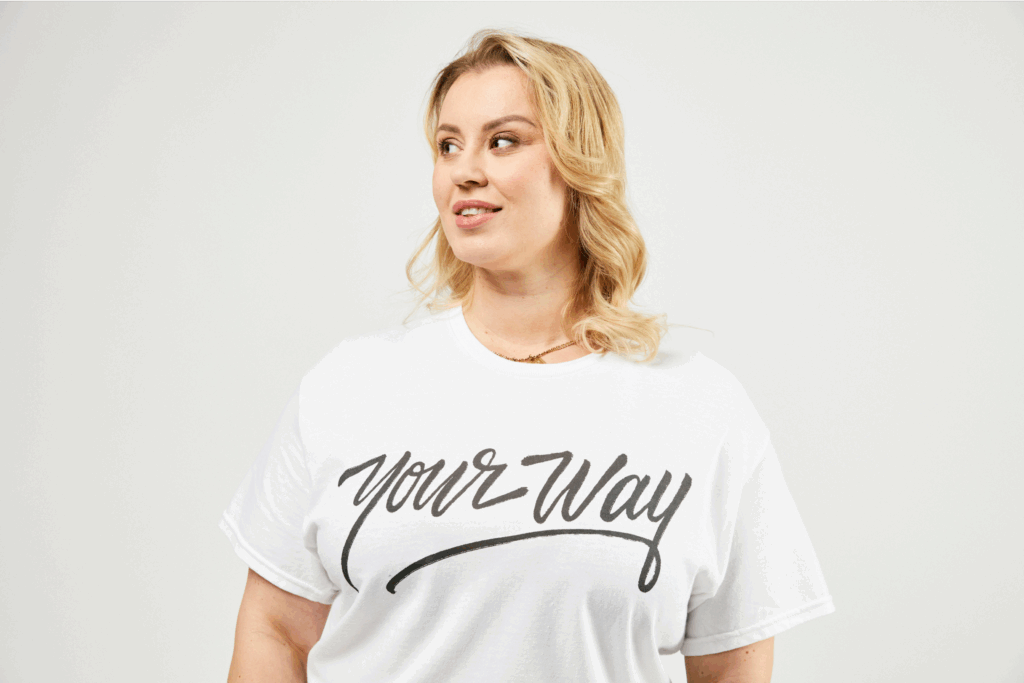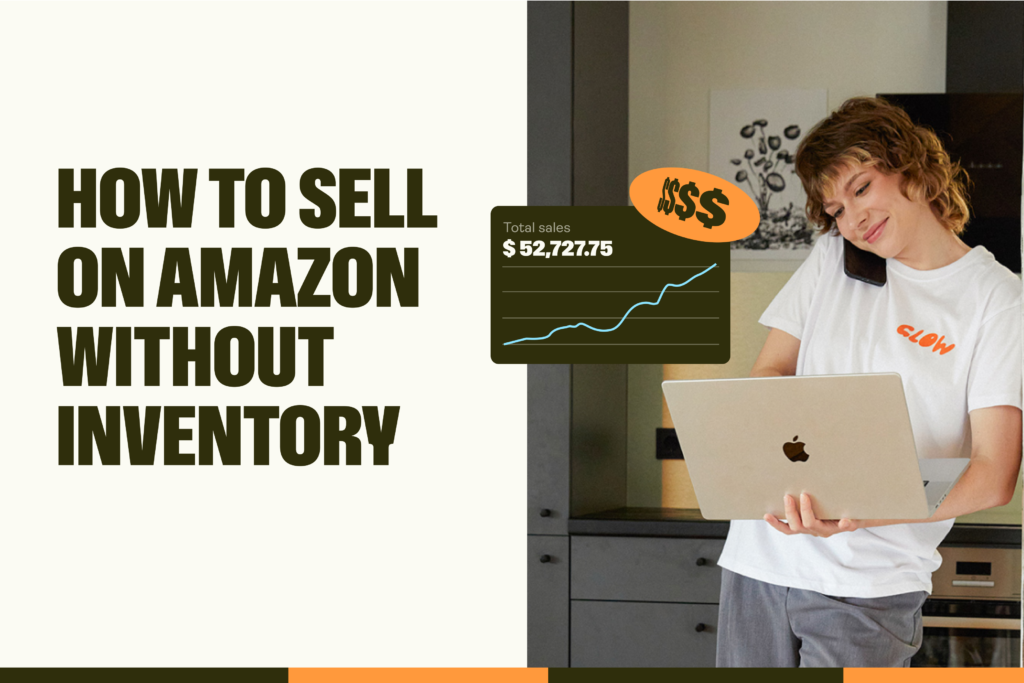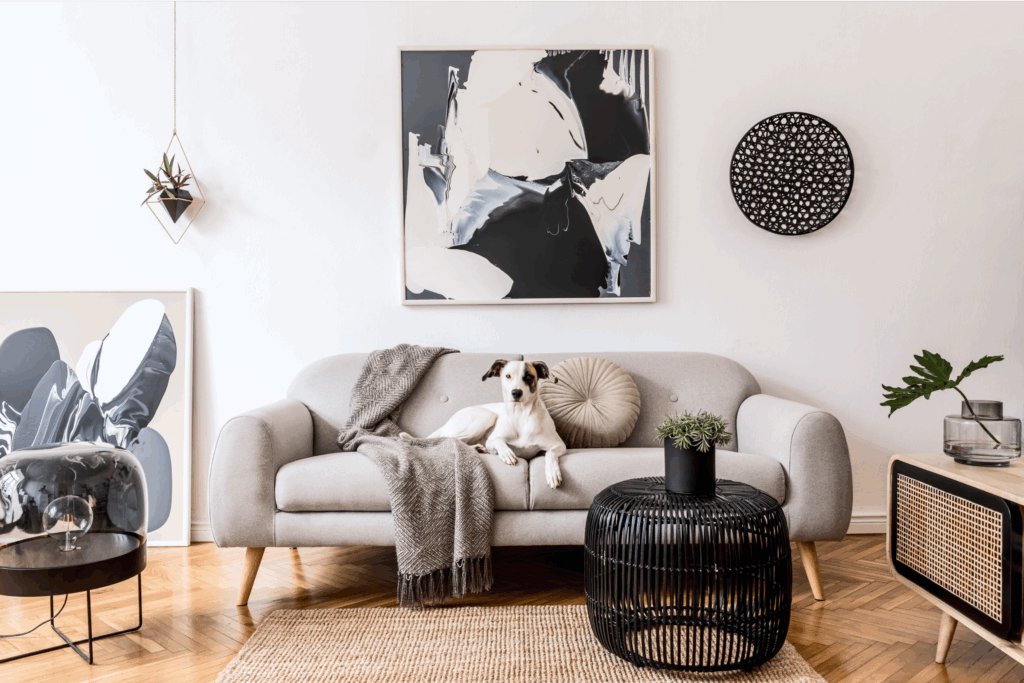Your business, your way – sell with Printify
Wondering how to start an online boutique without breaking the bank? Print on Demand is a low-cost way to start a fashion business with custom products.
In this guide, we’ll cover the steps for small business owners to start a successful online boutique.
Let’s dive in!
This post may contain affiliate links, which means we may earn a commission if you make a purchase through those links. This comes at no additional cost to you.
Key takeaways
- A well-researched business plan and a thorough understanding of your niche can significantly increase your boutique’s chance of success.
- Print-on-demand services offer a low-cost solution for starting an online boutique without a large upfront investment or inventory risks.
- Effective digital marketing strategies, including SEO and paid ads, can help drive traffic and generate sales for your eCommerce business.
Why open an online boutique in 2025?
By 2029, online fashion retail is projected to bring in $219 billion in sales, making it a lucrative industry for small businesses to tap into.
Don’t have an eCommerce store? Don’t worry! By the end of this article, you’ll know how to create an online clothing boutique – it’s easier than ever with Print on Demand.
How to start a boutique with no money
Print-on-demand (POD) is a no-risk business model.
You don’t pay for a product until after a customer buys it, which means no need for upfront investments and purchasing inventory.
Printify offers a free way to customize blank products for your online boutique with automatic fulfillment. All you need to do is connect to your sales platform of choice.
Etsy is free to join but charges fees once you make sales, while Shopify has monthly subscription costs.
How to start an online boutique in 10 steps

Ready to launch your eCommerce business? Start your own online boutique with low startup costs by following the steps below.
Step 1: Find your niche
Turn your business idea into a brand and consider your target market.
A clear and focused product offering is crucial for establishing a strong brand identity.
Minimalist jewelry, eco-friendly clothing, vintage or retro wear, boho-chic fashion, cultural or ethnic garments, and LGBTQ+ apparel are niche examples targeting specific audiences.
Consider these aspects when deciding on your niche:
- Buyer experience. What makes you choose products from one company over another?
- Personal values. What do you strongly believe in? What causes are important to you and your community?
- Problem solving. What issues do customers face that your online boutique website can solve?
- Trend analysis. What are the most sought-after products among your audience?
Step 2: Form a business plan
To launch a successful store, online boutique owners should prioritize crafting a comprehensive business plan.
Market research
Research online to identify your customers, learn their purchasing habits, and estimate how big your desired market is.
Explore market stats and growth projections to determine whether your chosen niche is profitable.
Legal structure
Consider the type of business entity you want to create for your online boutique. This includes other applicable legal responsibilities like a sales tax permit.
Competitor analysis
List your competitors and see how each clothing business operates. Analyze how your brand compares by conducting a SWOT analysis.
Business structure
Quantify your objectives and plan out key performance indicators (KPIs). Specify roles, responsibilities, and a reporting structure if you plan to hire other people.
Business model
Your business model will impact how the boutique operates. With Print on Demand, your store will be a B2C (business-to-customer) model with on-demand fulfillment.
Goals
Outline your short-term and long-term targets. Make SMART goals to define specific and measurable objectives that are feasible yet optimistic.
Step 3: Brand your online boutique

Choose the perfect name to start developing your boutique’s brand identity.
Keep it short and avoid anything that sounds too similar to competitors or existing online stores.
Here are some tips to help you brainstorm:
- Don’t limit your growth. Pick a business name that’s not too specific. What may start as an online pet accessories boutique can grow into something bigger, so find something versatile.
- Incorporate meaning. A business name like “Jack’s Shack” might not be the best option as potential buyers would have no clue of what you’re offering. Instead, integrate keywords relevant to your niche.
- Check digital assets. Find out if a domain name, email address, and social media handles are available in your desired brand name. Use a service like Namecheap to check availability.
- Don’t get lost in translation. Research if your catchy brand name has any bizarre or rude translations in other languages. Although it could result in a funny viral moment, it’s better to stay safe and avoid offending anyone.
If you’re having difficulty finding a catchy name for your online boutique store, there are plenty of free online resources to help you brainstorm.
Shopify’s AI Name Generator generates a catchy name based on a few keywords. Or try Business Name Generator, which shows the domain availability of each name.
Step 4: Register your online business
You’ll need to register your business, get a business license, and handle taxes to start an online boutique on an eCommerce website.
The details we provide on business licenses and finances are for informational purposes only. We strongly recommend consulting with a professional when registering your business and handling taxes to ensure legal compliance, as laws differ by region.
Business structure
There are a handful of structures to operate a business under:
- Sole proprietorship
- Partnership
- Limited liability company (LLC)
- Corporation
For an online boutique, two popular options are sole proprietorship or LLC.
In some regions, one person can operate a sole proprietorship without needing to file specific paperwork.
Partnerships involve two or more people sharing ownership, responsibilities, profits, and liabilities. This setup is great if you want to combine resources, but be aware that each partner is personally liable for business debts.
Establishing a limited liability company offers more protection – in most cases, the owner’s personal assets are shielded from business debts. However, there are exceptions to this.
You can also function as a corporation, which is ideal to attract investors. Corporations can issue shares, making it easier to raise capital. They also provide limited liability protection but will generally require more legal paperwork.
State paperwork
To form an LLC, you must file paperwork (Articles of Organization) with a state. In most cases, this will be the state you live in and establish the business from.
Some states, such as Delaware, offer incentives for out-of-state enterprises due to business-friendly laws. However, you must register as a foreign LLC, adding extra paperwork.
This also means paying a filing fee. Every state has different filing fees for LLCs, ranging from around $50 to several hundred dollars.
While it’s enough to simply register your business in some states, others might require you to apply for a business license or permit.
Taxes and financials
You’ll need to cover two types of financial registration to start an online boutique:
- Federal taxes:
Get a federal tax ID number or Employer Identification Number (EIN) to accept payments and file taxes from a business bank account.
There are a few exceptions – sole proprietors without employees, for example, may use their Social Security Number (SSN) instead.
- State taxes:
In addition to sales tax, you may need to register for state income tax, employment tax, or other specific taxes depending on your region.
ZenBusiness can help you quickly register an LLC, set up taxes, and check if you need other permits – but consult a tax professional if you’re unsure.
If you choose Printify as your eCommerce partner, our Help Center has comprehensive resources and FAQs about taxes for the US, EU, and Canada.
Step 5: Create a business bank account
Keep your online boutique finances separate from personal ones to maintain legal protections, simplify tax filing, and reduce the risk of personal liability.
Opening a business bank account provides legitimacy to your online boutique. With it, you can apply for a company credit card to consolidate all business-related costs.
Research banks and compare their fees and services. Then, gather all the necessary documents related your business finances. These may include an EIN, business formation papers, and a personal ID.
Step 6: Choose where to sell

Find the perfect platform to sell your products. Printify partners with multiple eCommerce sales channels with various accepted payment providers – perfect for building your online store.
These eCommerce integrations let you manage products, automate order processing, and scale your business efficiently.
Consider marketplaces like Etsy and eBay for your online boutique. They have a large, established customer base. Entry fees are low to zero, but marketplaces tend to charge more per sale.
Meanwhile, eCommerce hosting platforms like Shopify, Wix, WooCommerce, and Squarespace let you create and customize your own website.
Small business owners will have full control over branding, user experience, and product presentation, but this also means paying monthly subscription fees.
Each option has its pros and cons, so carefully consider this before launching your online store.
No matter which platform you choose, Printify makes it easy to export products in a few clicks. For a comprehensive breakdown of all the platforms to start an online boutique, read our guide on the best sites to sell online.
Step 7: Set up your store page
After choosing an eCommerce platform, it’s time to turn your brand into an actual online store. Start with the aesthetics – prepare banners, logos, and the overall web design.
Include vital components like a Contact page, an About page, shipping and returns policy pages, and a sizing guide. Check competitor sites for inspiration and keep things clean to reduce clutter.
Design a seamless checkout and consider offering free shipping to incentive purchases. Include delivery in the product price or display shipping rates upfront before checkout.
Step 8: Design and create your products

In this stage of how to start your own online boutique, it’s time to tackle the most exciting part – designing your custom products.
There are many design software options to help get you started. Alternatively, hire a freelancer on platforms like Fiverr or use our Shutterstock integration to access royalty-free images.
Follow these steps to start creating custom products with Printify for your online boutique:
- Find merch. Pick a product from Printify’s extensive Catalog. Navigate over 1,000 items using filters like product category, print type, or Print Provider.
- Apply your design. Click Start designing to access our Product Creator. Upload your custom images directly to our intuitive design interface.
- Customize your product. Use the built-in text editor, image editing tools, and other drag-and-drop features to finalize your design.
- Preview high-quality mockups. See lifelike images of your final design and use these photos for your storefront and social media marketing materials.
- Start selling. Publish and list the products on your chosen eCommerce sales channel and start making money.
We’ll handle all inventory, production, and shipping, giving you the freedom to focus on growing your brand as a small business owner.
Try these best-selling product ideas to include in your online store:
Step 9: Sample your products
Order product samples to make sure your products meet customers’ expectations.
At Printify, small business owners can easily order samples to review the product quality, vet a new Print Provider, or take real-life product pictures.
They’re also great for personal use – wear or show off your creations online and offline as part of your content marketing strategy.
Step 10: Work on effective marketing strategies
Crafting a marketing strategy might be the most time-consuming activity, but it will help attract your target audience and get you closer to making a profit.
Let’s explore the most popular ways of promoting products through digital channels.
Social media marketing

Organic reach is one of the cheapest ways to promote your online boutique storefront, though it may take time to build traction.
If you have existing social media handles for your brand, leverage them to display your merchandise. Start content marketing with posts that capture the attention of your ideal customer.
Expand your digital marketing strategy by allocating a monthly budget for influencer marketing and sponsored posts.
Search engine optimization (SEO)
Search engine optimization helps increase your eCommerce website visibility when people search for products similar to what you sell.
To make SEO work for your boutique business, use specific keywords in product titles and descriptions.
Instead of generic terms like “Stylish Dress,” use more detailed phrases like “Trendy Summer Dress for Women” in your product listings.
Tools like Semrush can help you find popular phrases and conduct keyword research. By optimizing content, you attract more potential customers and improve your chances of turning organic traffic into sales.
Email marketing
Email marketing helps online boutique owners connect with customers and drive sales.
Build an email list to share personalized promotions, product updates, and exclusive offers, helping you showcase new arrivals and drive engagement.
Segment your audience by preferences or purchase history for more targeted campaigns. With compelling designs and clear calls to action, you can turn subscribers into loyal customers.
Paid advertising
Just like a brick-and-mortar store, your online boutique needs advertising to get noticed. Whether it’s billboards, TV, or social media – ads drive awareness.
Many profitable business owners consider paid advertising to be one of the most important business tools to attract shoppers.
Start with paid ads online, such as on apps, websites, and Google. Bid for ad space on platforms like Instagram or Facebook.
For a detailed look at how paid ads work on marketplaces, check out our guide on Etsy advertising.
FAQ
Yes, many online businesses and boutiques are profitable. The key is to have a strategic business plan that aligns with your target market.
Online boutiques often thrive in the lucrative clothing and accessories online retail sector. Sellers can generate a steady cash flow with an optimized eCommerce storefront, an online business model like Print on Demand, and a high-level marketing strategy.
To learn how to start an online clothing boutique, start with thorough research to understand your niche and audience.
Craft a solid online boutique business plan that outlines the types of products you will sell online – the average merchant typically sells fashionable clothing and accessories.
Register as a small business owner and prepare to sell clothing online by cultivating your brand and crafting your designs.
To source products, we recommend using a print-on-demand service like Printify to create custom merchandise without purchasing inventory. Then, integrate an eCommerce platform and begin marketing your boutique to attract customers.
The costs associated with how to start a boutique from home can vary greatly depending on your own business model.
Small businesses that use dropshipping or POD might need less capital, while stores that plan to hold inventory or customize products in-house need a larger budget to cover upfront costs.
Knowing how to open an online boutique and having a detailed plan will help you outline expenses and create a realistic budget to build your dream business.
Final thoughts
Starting an online boutique involves key steps like finding your niche, creating a solid business plan, registering your business, and setting up a bank account. Once those foundations are in place, it’s all about marketing to attract your target audience.
From designing and sourcing products to crafting a stunning storefront on your preferred eCommerce platform, Printify makes it easier to start an online boutique business.
Draw up a business plan, roll up your sleeves, and start turning your dreams of a boutique fashion brand into reality.
















